It’s a tough world out there and many animals have had to arm themselves. One capacity that has evolved time and time again is toxic weaponry – venoms and poisons.
Although oft confused, there is a clear distinction between these two forms of toxins. Whereas venoms are produced in specialised tissues and are delivered to predators or prey through specialised body parts such as fangs and stingers, poisons are not directly delivered. They are instead accumulated within an animal’s tissues and exert their effects when the animal is touched or consumed. Poisoning is often passive, whereas envenomation is an active process.
As you will see from our list of most poisonous animals, many of these toxins are acquired through the poisonous animal’s own diet and most are used as a defence mechanism against predators. There are some, however, such as the Greenland shark, in which their toxicity is merely a by-product of other adaptations to their environment. Read on to find out more!
10 poisonous animals
Poison dart frog (Dendrobatidae family)
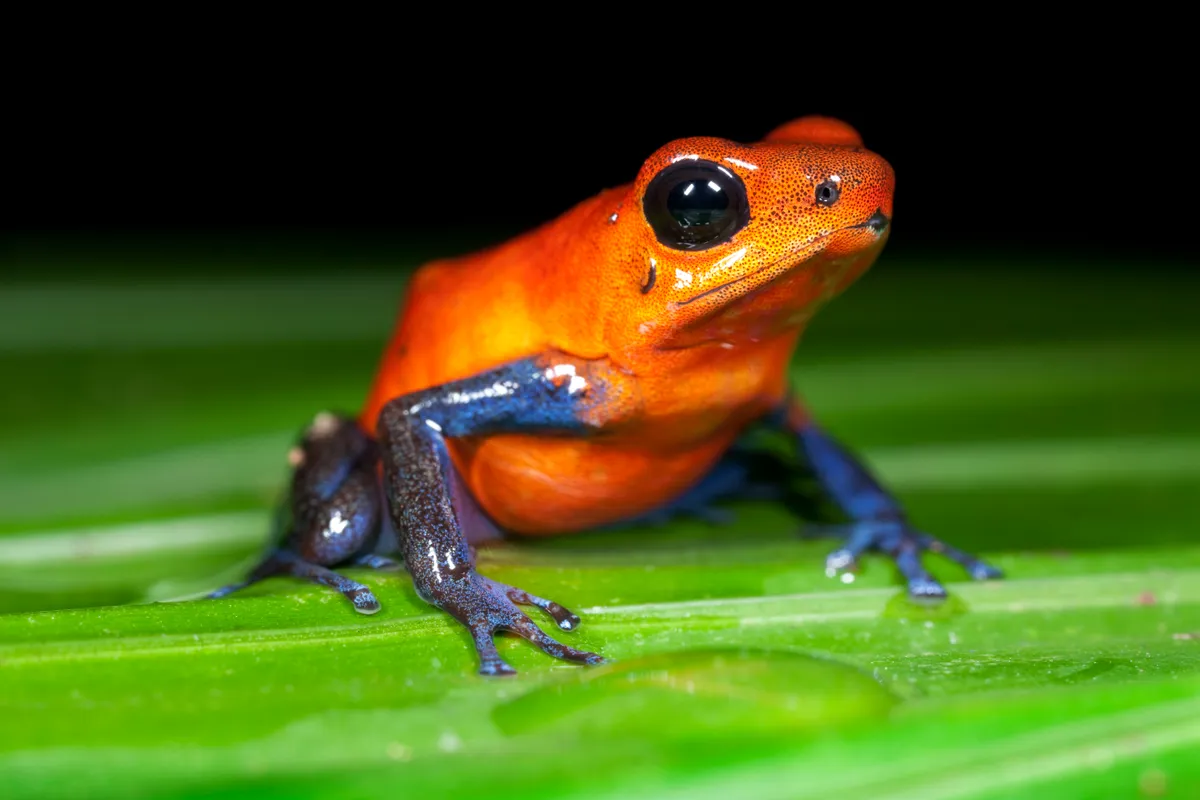
Starting off with a zoo staple, it's the legendary poison dart frog. These tiny amphibians pack a big punch, with the deadliest of the family (the golden poison dart frog) having enough venom to kill ten grown men! It is considered to be among the most toxic animals on earth. Not bad for a 2-inch-long bright yellow frog.
Poison dart frogs derive their toxins from their food, including mites, centipedes and ants, in a process known as diet toxicity. It functions as a chemical defence against any predator who might be unwitting enough to eat them. To make sure this rarely happens they have evolved a bright warning colouration alongside their toxins, telling predators to stay away. This advertisement of "I’m bad to eat" is known as aposematic colouration.
Cane toad (Rhinella marina)

From little frogs to large toads, the next on our list is a very troublesome species indeed. Cane toads, native to South and Central America but introduced to many other countries, are considered to be one of the worst invasive species in the world.
They are a particular problem in Australia where they were introduced to eat sugar cane beetles but spent more time voraciously reproducing and having a terribly negative impact on the native wildlife. Their toxicity plays a part in this. They secrete bufotoxin, a milky poison, from glands in their skin when threatened.
In their native habitats, many predators have evolved ways to combat this defence mechanism, but this is not so in Australia where they are an alien species. This means that they have no natural predators and so can multiply rapidly and potentially kill any animal that tries to eat them!
Read about some of the UK's troublesome invasive species
Pfeffer's flamboyant cuttlefish (Metasepia pfefferi)
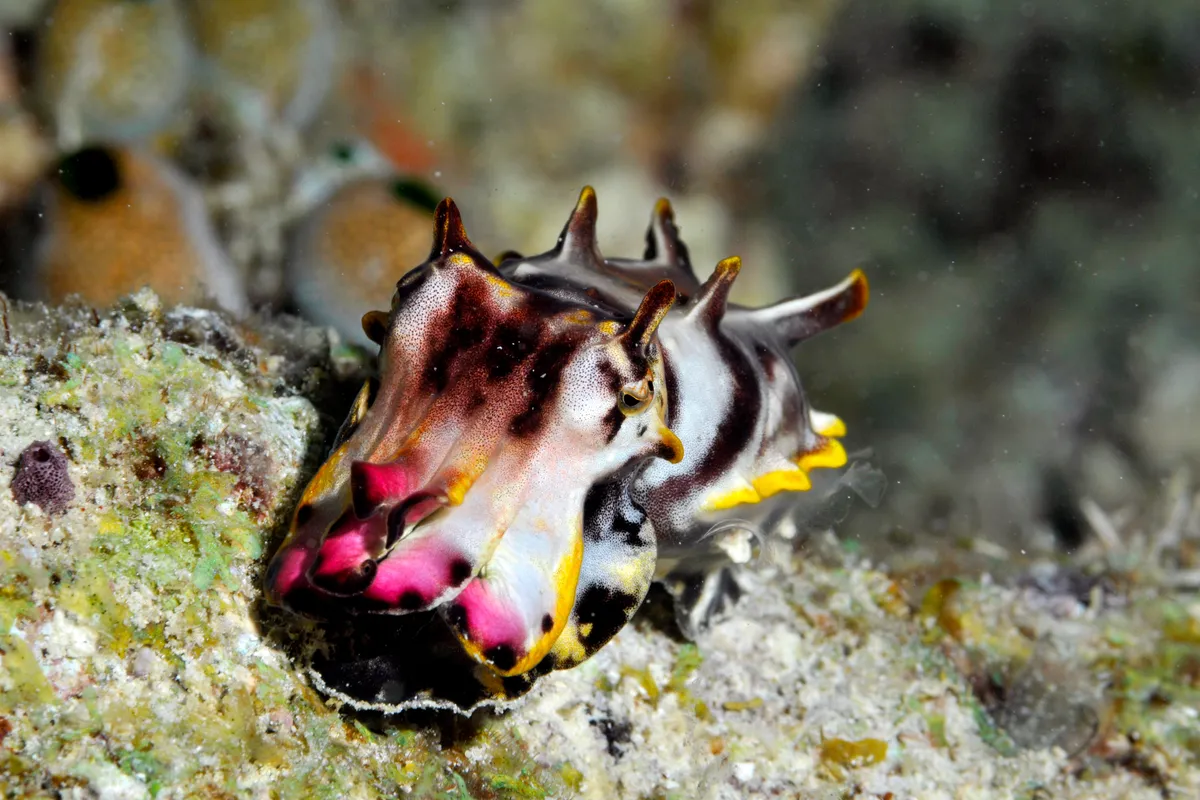
This colourfully named cephalopod is another species that is thought to utilise aposematic colouration. At rest, it is a dark brown, but when faced with a predator it will quickly change colour, creating a vibrant moving display of black, white, and yellow, with bright red arm-tips.
And the warning it is giving off is genuine, it really wouldn’t be profitable to eat, due to its highly toxic muscle tissue. The toxins it contains are in fact so potent that it is thought to rival the notorious blue-ringed octopus, one of the most dangerous animals in the ocean.
The cuttlefish, thanks to its ability to change colour, made it onto our list of the weirdest fish in the world.
Greenland shark (Somniosus microcephalus)
A deep-water shark is likely not the first thing you think of when you think of poisonous animals. Especially one that has no natural predators. However, the toxicity of this fascinating fish is not due to any defence mechanism, but in fact its environment.
One of the world's weirdest sharks Greenland sharks live in incredibly cold and deep waters, down to minus 2 degrees Celsius and 7,200 feet deep. As an adaptation to this extreme cold and water pressure, its flesh contains high levels of trimethylamine oxide, which acts a bit like antifreeze and, as a side effect, makes it toxic to eat.
This is just one of many astonishing things about this shark, which can grow up to 21 feet and is thought to be the world’s longest living vertebrate, living up to 400 years!
Hooded pitohui (Pitohui dichrous)

Another surprising addition to the list is a poisonous bird! The hooded pitohui, which is native to New Guinea is one of only a very few toxic birds. It contains batrachotoxin compounds in its skin, feathers and organs, the same type of neurotoxin as is found in poison dart frogs and obtained similarly through their diet of insects.
Interestingly hooded pitohui closely resemble other birds that are also known as pitohui (the Crested pitohui) and are also poisonous. They are, however, not very closely related and this is thought to an example of convergent evolution – wherein different species evolve the same traits independently, and of Müllerian mimicry where different species mimic each other’s warning signals to predators.
You can learn about convergent evolution and mimicry in our helpful biological terms glossary
Keelback snakes (Rhabdophis)
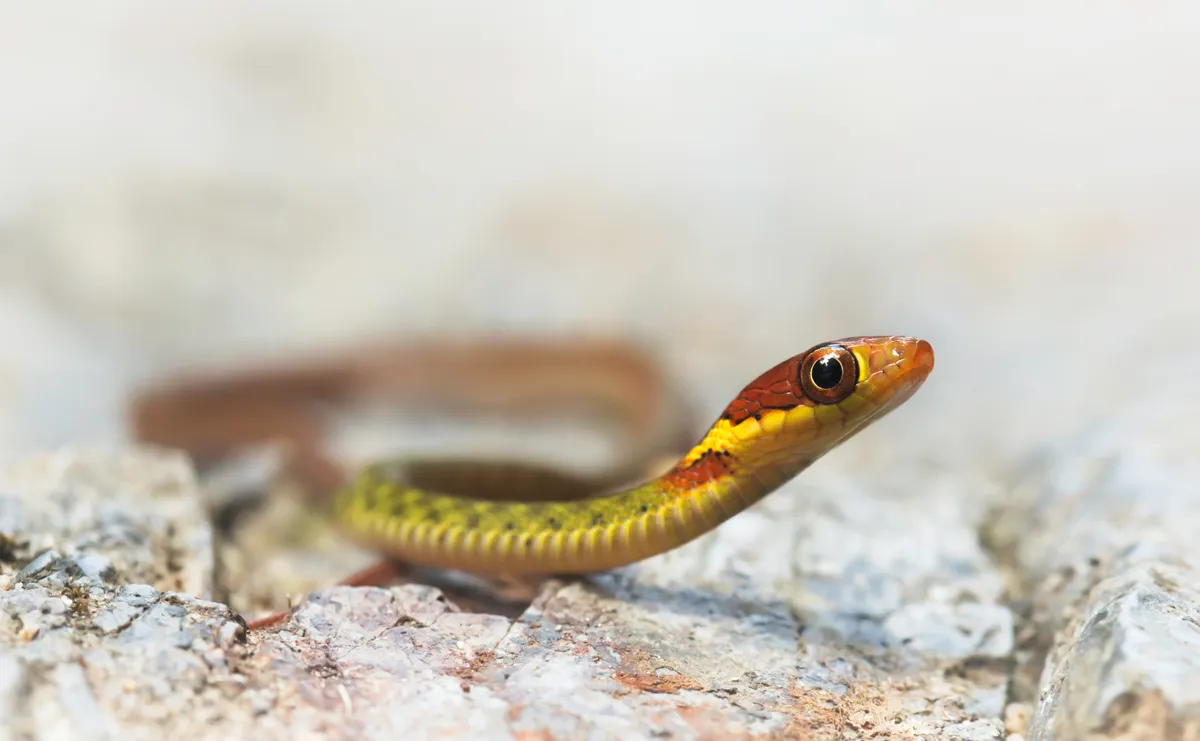
Now for something that is often closely associated with poison: a snake. However, many snakes are wrongly called poisonous when they are in fact venomous.
Keelback snakes are one of just a few truly poisonous snakes. Instead of toxins being delivered via specialised fangs, they instead passively secrete poison through their salivary glands. The toxin is derived from eating poisonous toads and absorbing it into their bloodstream. These snakes do, however, use their poison in much the same way as venomous ones do, as it is ‘delivered’ to victims as a bite.
Monarch butterflies
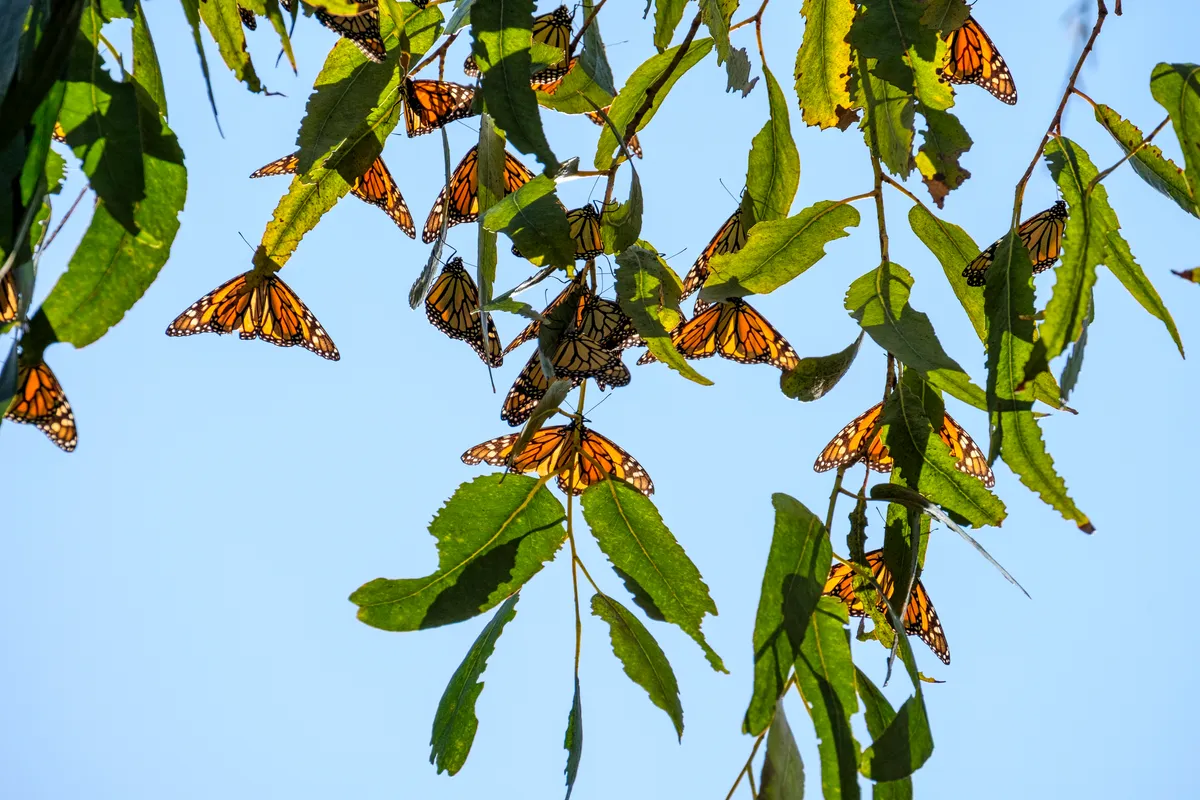
Monarch butterflies are yet another species that derive their toxins from their diet. In this case, it is acquired when their larval stage – caterpillars – feed on milkweed. These plants produce compounds called cardiac glycosides which act to disrupt cell functioning.
What is interesting is how the caterpillars can eat the plant with impunity and store the toxins in their own bodies without being harmed. Scientists have recently found that they evolved a resistance through a combination of three different DNA mutations that allowed them to not only eat but thrive on the poisonous plant and use its toxicity for their own ends – defence from predators.
Puffer fish (Tetraodontidae family)
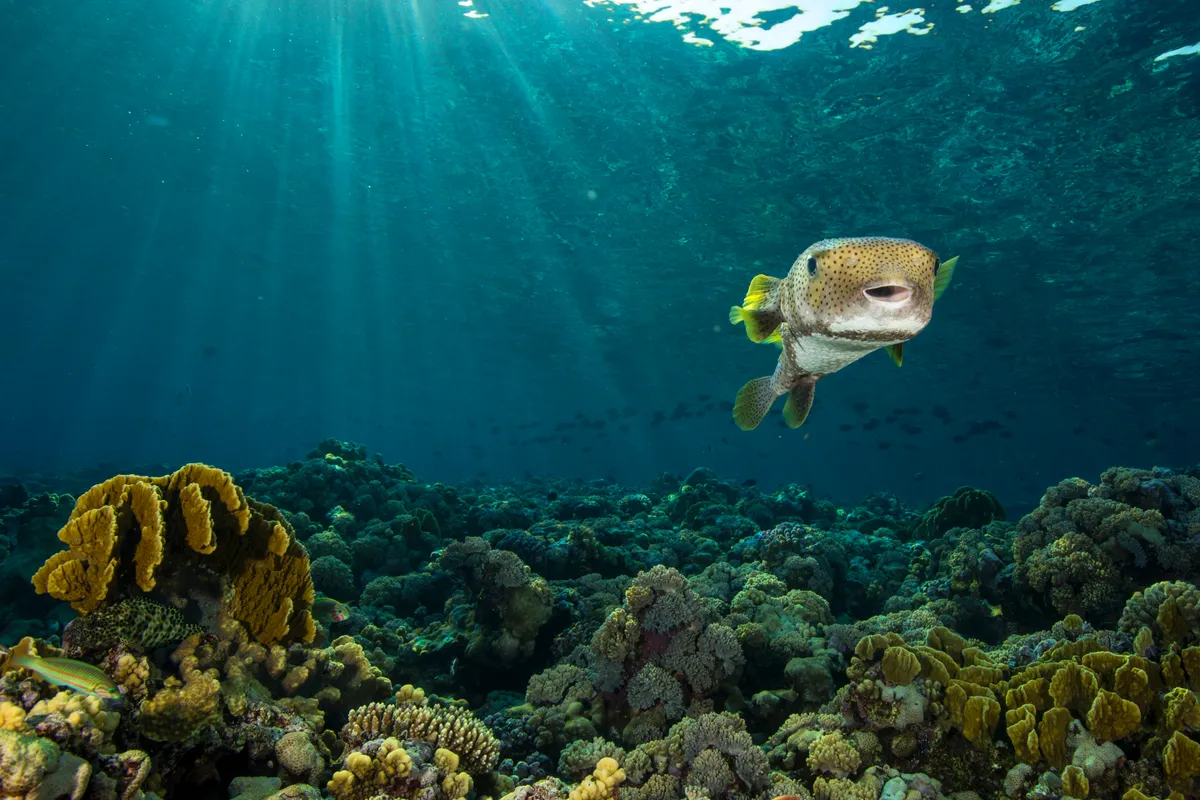
Now this is an animal that has some pretty elaborate predator defence mechanisms. Most famously, puffer fish can ‘inflate’ by very quickly filling their stomachs with water, becoming almost spherical and very difficult to eat. They are also highly toxic.
Almost all species contain a compound called tetrodotoxin, a neurotoxin that is very deadly to humans in particular. To us, it is up to 1,200 times more poisonous than cyanide. Despite this, it is still seen as a delicacy in some East Asian countries and is eaten when specially prepared by chefs who know which parts are safe to eat. Would you try it?
Blister beetles (Meloidae family)

Less life-threatening, but still very unpleasant is the poison of blister beetles. This family of beetles, which number about 3,000 species, are found worldwide but are absent from New Zealand and Antarctica.
They sometimes feed on crops but are most destructive to livestock. They tend to aggregate on alfalfa plants which are fed to horses in particular. Even when dead, their poison, a blistering agent called cantharidin, will damage the digestive tract of an animal that eats a beetle body. Even a few beetles in a feed can be lethal to horses. They do, however, in many species use bright aposematic colouration to ward off potential predators.
Hawksbill sea turtle (Eretmochelys imbricata)

The last on our list is one you might never suspect, a sea turtle! Through their diet of sea urchins and sponges they take on toxins and these are absorbed into their body fat without harming the turtle but their flesh becomes poisonous.
Intoxication due to the consumption of marine turtles is known as chelonitoxism. It is considered rare but can be deadly to humans. Although this danger discourages it still does not completely stop the harvesting of hawksbill sea turtles for meat. In 2010, a mass outbreak of food poisoning in Micronesia that led to 3 deaths and 95 others becoming sick was traced to the consumption of just one hawksbill turtle.
More fascinating turtle facts
